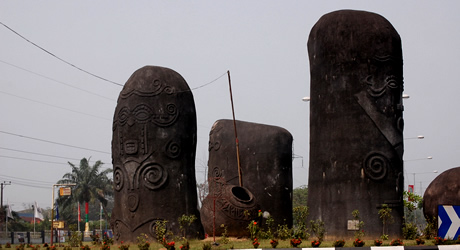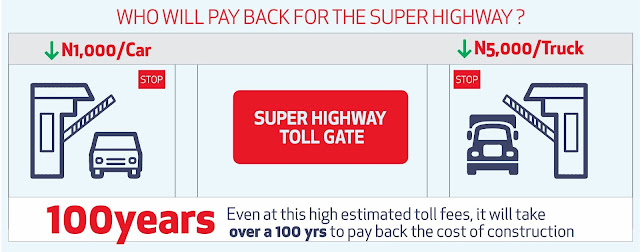
Villagers from Ikot Okpo Ene, Ikot Ndarake and Ikot Abasi Effiom in Akpabuyo local government area of Cross River, have vowed not to allow construction work on the proposed Superhighway until the state government pays compensation on the destruction of property and economic crops.
Over a billion Naira worth of property, farm lands and economic crops were lost as the government cleared the starting point of the project.
The people have remained in perpetual hardship and pains in the last two years when the state government conceived the idea of constructing the superhighway which till now has not seen the light of the day.
It would be recalled that President Muhammadu Buhari had on 30th October, 2015 performed the ground breaking ceremony to commence the construction of a superhighway from Bakassi to Obanliku in the state.
However soon after the ceremony, the state government mobilised machines to the affected three communities in Akpabuyo and began clearing of farm lands as well as economic trees which are the major sources of income for the villagers.
Narrating their ordeal to newsmen, Chief Emmanuel Okon, who spoke on behalf the three communities, regretted ” that no inventory was taken by government on the number of economic trees and property destroyed. Till the his moment, no plan has been made by the state government to pay compensation to the affected comminatory and individuals”.
Okon said ” the sources of livelihood of our people especially women have been destroyed as women and children have resorted to begging to survive”.
This ugly development, he said, has increased the rate of youth restiveness and crime in the area while over 10 youths and children have dropped from school due to the inability of their parents to pay their fees.
He commended the out cries of the Non-governmental organisations in the state which made the Federal government to halt the project until the Environmental Impact Assessment (EIA) is carried out.
As a community, he added, “we are not aware of any of the conditions that have been met as directed by the Federal Ministry of Environment by the state government especially the directive to consult with the host communities and issue of payment of compensation”.
Despite not meeting the conditionalities, he said, “the state government has mobilised machines on site to resume the clearing of the farm lands, when there is no formal approval of the (EIA) from the Federal government”.
While describing the project as “one shrouded with deceit and illegality as well as anti people” he called on the Federal government to compel the state to as a matter of priority pay compensation to the affected communities.
Also speaking, chief Saviour Effiom Duke from one of the communities, expressed worry over the plight of his people whose property and farm lands as well as economic trees were destroyed.
He called on the Federal government to compel the state government to commence the payment of compensation without delay.
“We are not against the construction of the superhighway, but government should pay compensation over the destruction of our property and economic trees.
Also, a blind man and several widows narrated their ordeal as they had lost their palm plantations and their farmlands.





